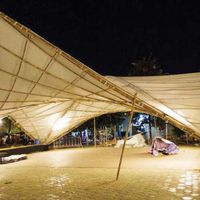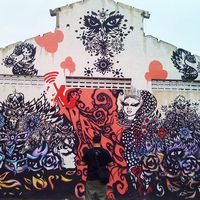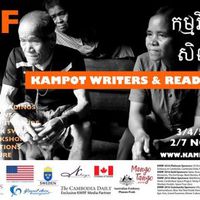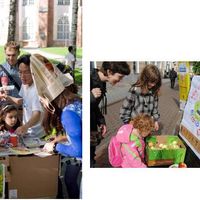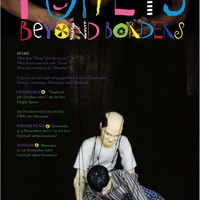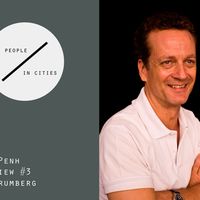Sustainable architecture and design initiatives in Cambodia
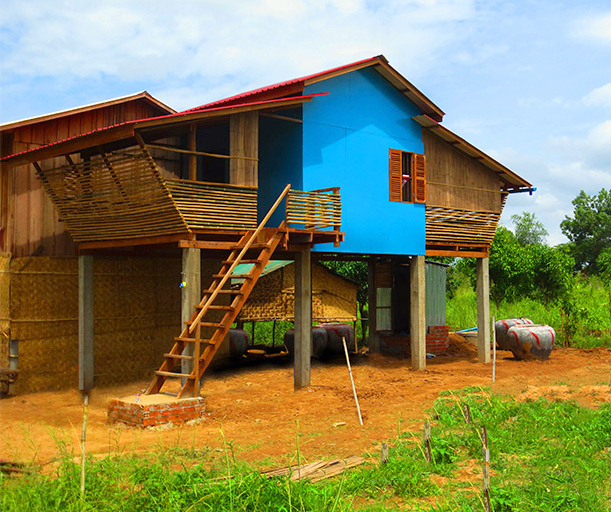
Atelier COLE, Building Trust International, and Habitat for Humanity Cambodia teamed up to design an affordable and eco-friendly housing scheme for families affected by HIV/AIDS. The innovative project has thus far constructed nine pilot ‘Framework Houses,' each made from sustainably grown timber, bamboo, natural materials, and recycled materials. The adaptable and flood-resistant homes were built on the outskirts of Phnom Penh, Cambodia.
Created with funding through SELAVIP and the input of the local community, the adjustable Framework House can be customised to the client’s needs, from the layout to material selection. Each site-specific house is built using local labor and sustainable building techniques to keep its environmental footprint, construction costs, and maintenance costs to a minimum. The organisers empowered the community with training workshops that taught locals how to affordably and sustainably replicate the original Framework House design.
Source: news story from Inhabit
And in another related initiative reported in 2015 by Inhabit:
Eco-friendly youth center is built from bamboo, earth bricks, and recycled plastic bottles in Phnom Penh
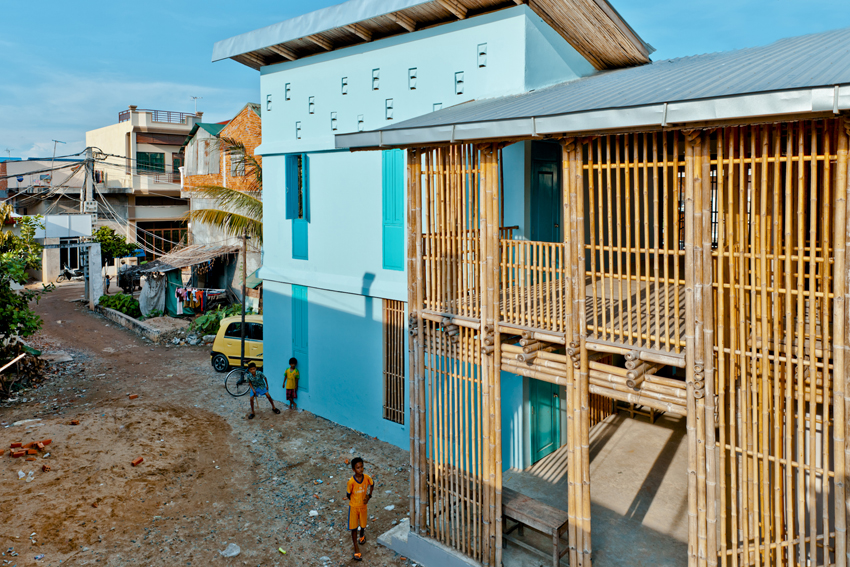
Finnish design group Komitu Architects teamed up with Cambodian NGOs Cambodian Volunteers for Society (CVS) and Khmer Kampuchea Krom Human Rights and Development Organization (KKKHRDA) to design and build an ecologically and socially sustainable youth center that teaches computer skills, languages, and vocational skills to disadvantaged youth. The eco-friendly youth center was built using locally sourced bamboo, compressed earth bricks, and recycled plastic bottles.
Community workshops and input from local architecture students and professionals played an essential role in the design of the youth center, which celebrates both the local Cambodian culture and traditional building techniques. These community workshops, lectures, and site visits even inspired the local NGO UPDF to build a community center from bamboo and organize bamboo training workshops for a network of community builders throughout Cambodia.
Inhabitat.com is a weblog devoted to the future of design, tracking the innovations in technology, practices and materials that are pushing architecture and home design towards a smarter and more sustainable future.
Similar content
posted on
27 Apr 2017
16 Jan 2017
from - to
01 Nov 2016 - 07 Nov 2016
05 Dec 2012
from - to
16 Oct 2011 - 15 Nov 2011

